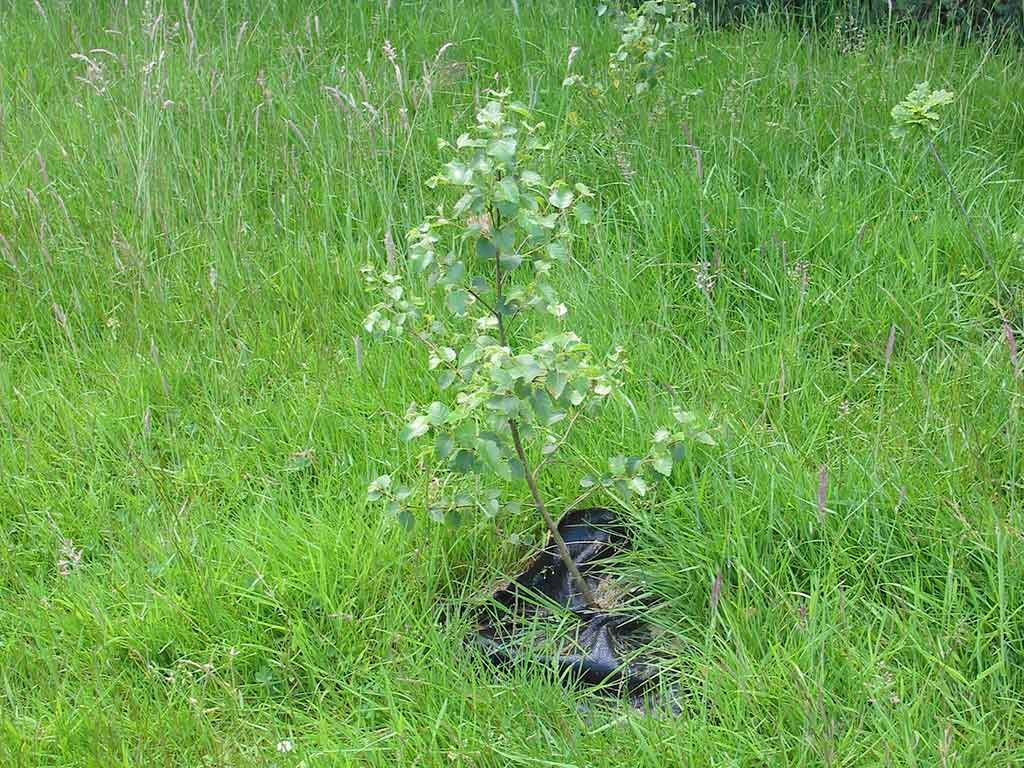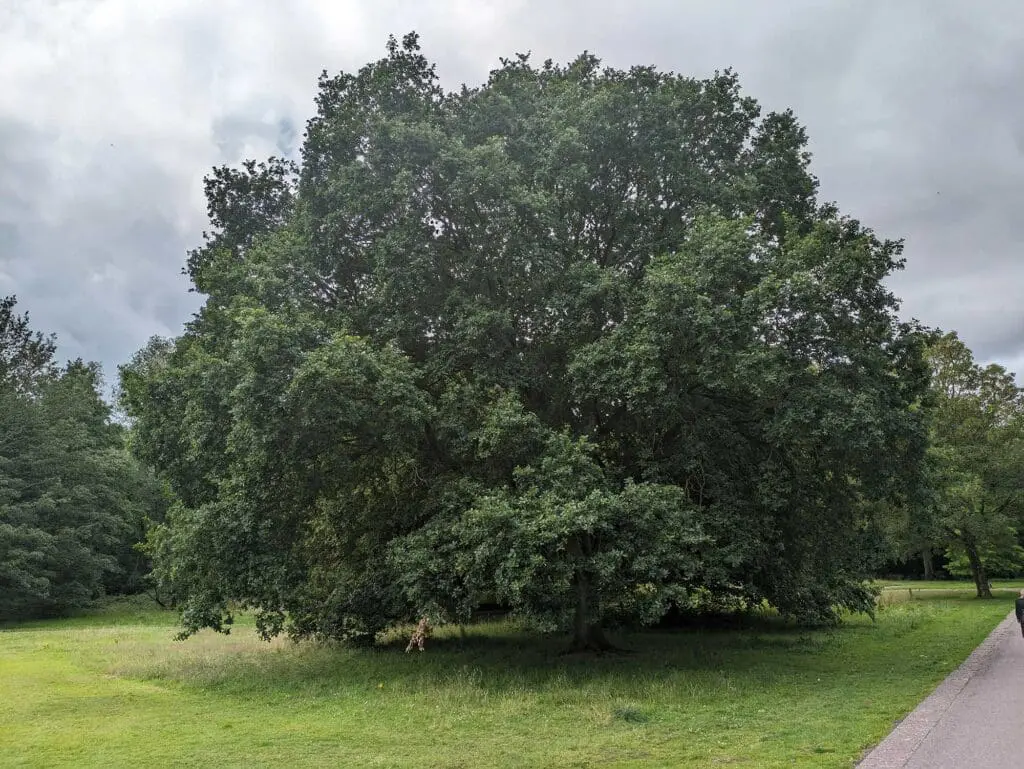If you’re planting a new native woodland, you’ll need to decide what species to plant. With native trees, some may be readily available from a local nursery, while others may not – but you could always choose to grow native tree species from seed.
The species chosen should be native to the local area. You should aim to mimic local semi-natural woods on similar soils. In Northern Ireland [this article was originally written by our team in Northern Ireland] we have only three types of native semi-natural woodland – oakwood, mixed ashwood and wet woodland. These correspond to the woodland types found in the generally wetter and more hilly, northern and western parts of the British Isles.
Upland oakwood
Major trees in Upland Oakwood
| English Name | Latin Name |
| Sessile oak | Quercus petraea |
| Downy birch | Betula pubescens |
Minor trees in Upland Oakwood
| English Name | Latin Name |
| Silver birch | Betula pendula |
| Pedunculate oak | Quercus petraea |
| Rowan | Sorbus aucuparia |
| Holly | Ilex aquifolium |
| Bird cherry | Prunus padus |
Shrubs in Upland Oakwood
| English Name | Latin Name |
| Hazel | Corylus avellana |
| Hawthorn | Crataegus monogyna |
This type of woodland grows mostly on acid, often shallow, leached soils in a cool, wet and windy climate.
Upland mixed ashwood
Major trees in upland mixed ashwood
| English Name | Latin Name |
| Ash | Fraxinus excelsior |
| Downy birch | Betula pubescens |
| Rowan | Sorbus aucuparia |
Minor trees in upland mixed ashwood
| English Name | Latin Name |
| Sessile oak | Quercus petraea |
| Pedunculate oak | Quercus robur |
| Wych elm | Ulmus glabra |
| Alder | Alnus glutinosa |
| Holly | Ilex aquifolium |
| Bird cherry | Prunus padus |
Major shrubs in upland mixed ashwood
| English Name | Latin Name |
| Hazel | Corylus avellana |
Minor shrubs in upland mixed ashwood
| English Name | Latin Name |
| Hawthorn | Crataegus monogyna |
| Elder | Sambucus nigra |
| Grey willow | Salix cinerea |
Upland mixed ashwoods are typical of neutral and alkaline, often moist soils in a cool, wet and windy climate. They are particularly characteristic of limestone districts, where they form the most abundant type of semi-natural woodland. Wherever they occur, they form some of our richest assemblages of flowering plants.
Wet woodland
Major trees in wet woodland
| English Name | Latin Name |
| Alder | Alnus glutinosa |
| Ash | Fraxinus excelsior |
| Downy birch | Betula pubescens |
Minor trees in wet woodland
| English Name | Latin Name |
| Goat willow | Salix cinerea |
| Sessile oak | Quercus petraea |
| Pedunculate oak | Quercus robur |
| Holly | Ilex aquifolium |
| Rowan | Sorbus aucuparia |
| Bird cherry | Prunus padus |
| English Name | Latin Name |
| Hazel | Corylus avellana |
| Hawthorn | Crataegus monogyna |
| Grey willow | Salix cinerea |
Minor shrubs in wet woodland
| English Name | Latin Name |
| Elder | Sambucus nigra |
| Guelder rose | Viburnum opulus |
| Blackthorn | Prunus spinosa |
| Eared willow | Salix aurita |
| Bay willow | Salix pentandra |
These occur mainly as small woods or localised patches in larger woods. They are typical of river valleys, the surroundings of mires and raised bogs, the transition zones between open water and drier ground, and beside small winding streams. They can also occur on slopes well above valley bottoms and on plateaux where a high watertable is maintained throughout the year.
Deciding on the numbers of trees I need
Species selection
A new woodland will begin to look more natural if it contains a relatively small number of species. Whilst it might be tempting to include all the species in the above lists, it is better to plant only the major species (perhaps including a small number of the minor ones). Whichever trees and shrubs you choose, they should be planted in ‘clumps’ of between 15-50 individuals (perhaps 5-15 for the minor species) to prevent the faster growing species from becoming dominant and shading out the slower growers.
The only instance where we might not choose to follow the tables above is when planting on reclaimed sites, which normally have soils which are compacted, prone to waterlogging or otherwise disturbed. Here, we may need to include pioneer species which are not of the local type. These may include alder, rowan, birch and goat willow.
Spacing
It is very important to plant your new trees at the correct spacing to ensure they establish themselves quickly without competing with each other too much. Some competition is, of course, beneficial as it will cause the canopy to close more quickly, exclude sunlight from the ground which, in turn, prevents weeds from growing vigorously . This will also begin to provide the right conditions for the plants that we want to encourage amongst our trees – primrose, bluebell, wild garlic, etc. To this end we would suggest a 2m spacing between trees. Now this doesn’t mean that you should measure precisely the distance between trees. It’s easier to explain by example.
For rectangular areas
If you have an area 50m by 40m, that would be 2000m2. To give us 2m between trees we just halve the edge dimensions – the 50m and 40m. This gives us 25 trees by 20 trees, or 500 trees.
For irregular areas
The same can be done for irregular shapes if you know the area. For 560m2 we need to find the square root of this number (a calculator will be needed by most of us!). This gives us 23.7, which we halve to 11.85. All we do now is round it up to 12 and multiply this by itself – 12 x 12 = 144 trees.




